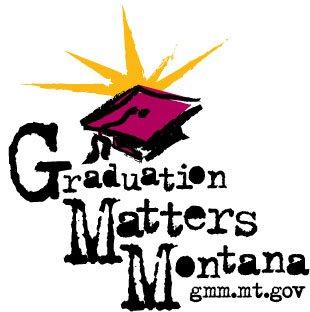 Montana recently hosted Jeff Edmondson of StriveTogether in a daylong workshop to explore collective impact in rural communities. Six Montana towns, with populations ranging from 7,000 to 100,000, gathered teams from early childhood, K-12, college access and employers to explore the StriveTogether framework.
Montana recently hosted Jeff Edmondson of StriveTogether in a daylong workshop to explore collective impact in rural communities. Six Montana towns, with populations ranging from 7,000 to 100,000, gathered teams from early childhood, K-12, college access and employers to explore the StriveTogether framework.
Folks in the room were local leaders in Graduation Matters Montana (GMM), a statewide initiative of the Montana Office of Public Instruction (OPI), which seeks to increase the state’s high school graduation rate through artful local partnerships between schools, community organizations and Main Street businesses. Since it began in 2010, forty-three communities have launched a GMM initiative, representing 75% of the state’s high school students. Dropout rates are down and the state graduation rate is on the rise. GMM is, as Liz Weaver of the Tamarack Institute describes, an example of “nested collective impact”.
While the term “collective impact” is unfamiliar to many in Montana, local GMM teams engage in the five key conditions of collective impact. They share a common agenda: to increase the number of students who graduate from high school prepared for their next steps in life. They use data on graduation rates, dropout rates, college going and college remediation rates to develop measurable targets for their work. The teams engage in mutually reinforcing activities, such as community-wide kick-offs, annual I Pledge to Graduate events, and school-community working groups that implement student leadership academies, attendance initiatives and peer to peer mentoring programs. Local teams encourage continuous communication through regular GMM team meetings, school board and community updates, and proactive media stories.
Supporting this work at every level is the state education agency, OPI, which serves as a statewide backbone organization. GMM is a signature initiative of State Superintendent Denise Juneau, and as such OPI dedicates staff time to assist local initiatives, to provide user-friendly formats of relevant data, to develop on-line GMM toolkits, to convene GMM teams at an annual Summit in which lessons are shared and progress is celebrated, and to raise private sector funds to support local GMM work.
As a rural initiative working within a collective impact framework, there are challenges as well as advantages to the work. The challenges relate to the state’s frontier nature: Montana’s borders are as wide as Washington, D.C. to Chicago, with the population of Delaware sprinkled between. Our landscapes are dotted with “island communities” – tight-knit towns separated by mountain passes, river valleys and wide plains.
Montana’s rural nature means that we often work with limited people power and organizational capacity. It’s not unusual for a school superintendent, for instance, to also serve as the school principal, occasional school bus driver, and custodian. Community organizations have small staff who must wear many hats to accomplish a range of duties. If one believes, as I do, that time is our most precious resource, it is often time that very busy people are lacking, time to join new conversations and to do the hard work of collective impact.
Given these challenges, GMM seeks to leverage rural community advantages. Rural communities are rich in interpersonal and inter-organizational networks. In the past year, GMM teams formed over 250 new Main Street business and community organization partnerships: as local leaders are often alumni of the school, and/or have kids attending the schools. Community organizations often manage several interrelated programs and thus have a comprehensive understanding of the challenges and capacities of the local economy.
Graduation Matters Montana works within these local networks to increase focus on student success. As we like to say, “No one is pro-dropout.” Armed with a vision for a collaborative culture, good data and steady support from OPI, many communities are finding quick success in their efforts.
We invited Edmondson to Montana to help us engage local GMM teams in an essential question: How can collective impact help to sustain local GMM partnerships over the long run? Like most things in life, initiatives have natural life cycles. GMM is entering its fourth year, and while progress is significant, we are thinking about what it takes to sustain the effort. What keeps people coming to the table, month after month, year after year, to approach age-old challenges (student learning, graduation and success in life) with renewed curiosity for greater impact?
This is the work that we are engaging in, and work that we look forward to sharing with the Collective Impact Forum in the months to come.
